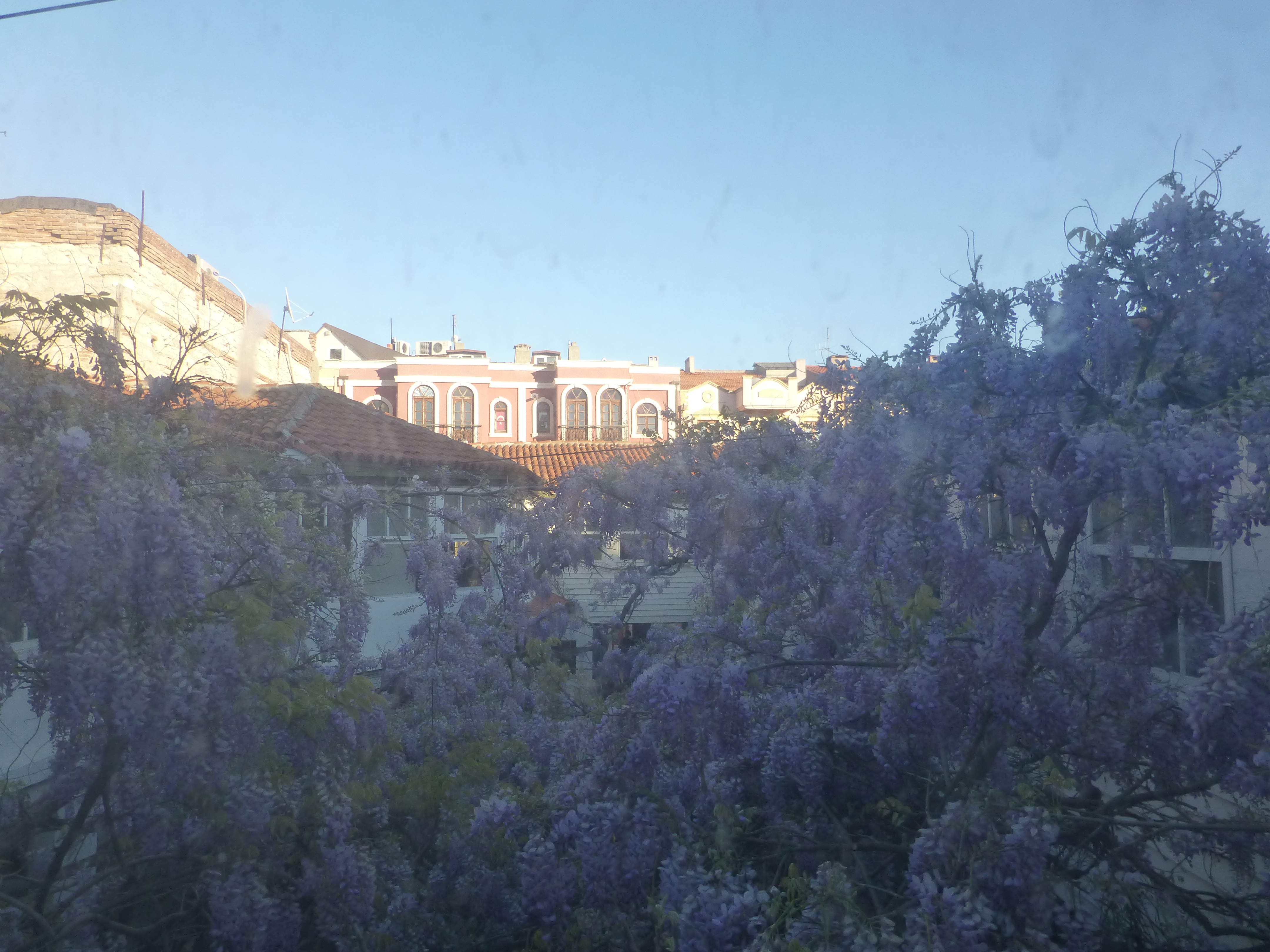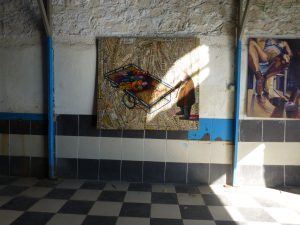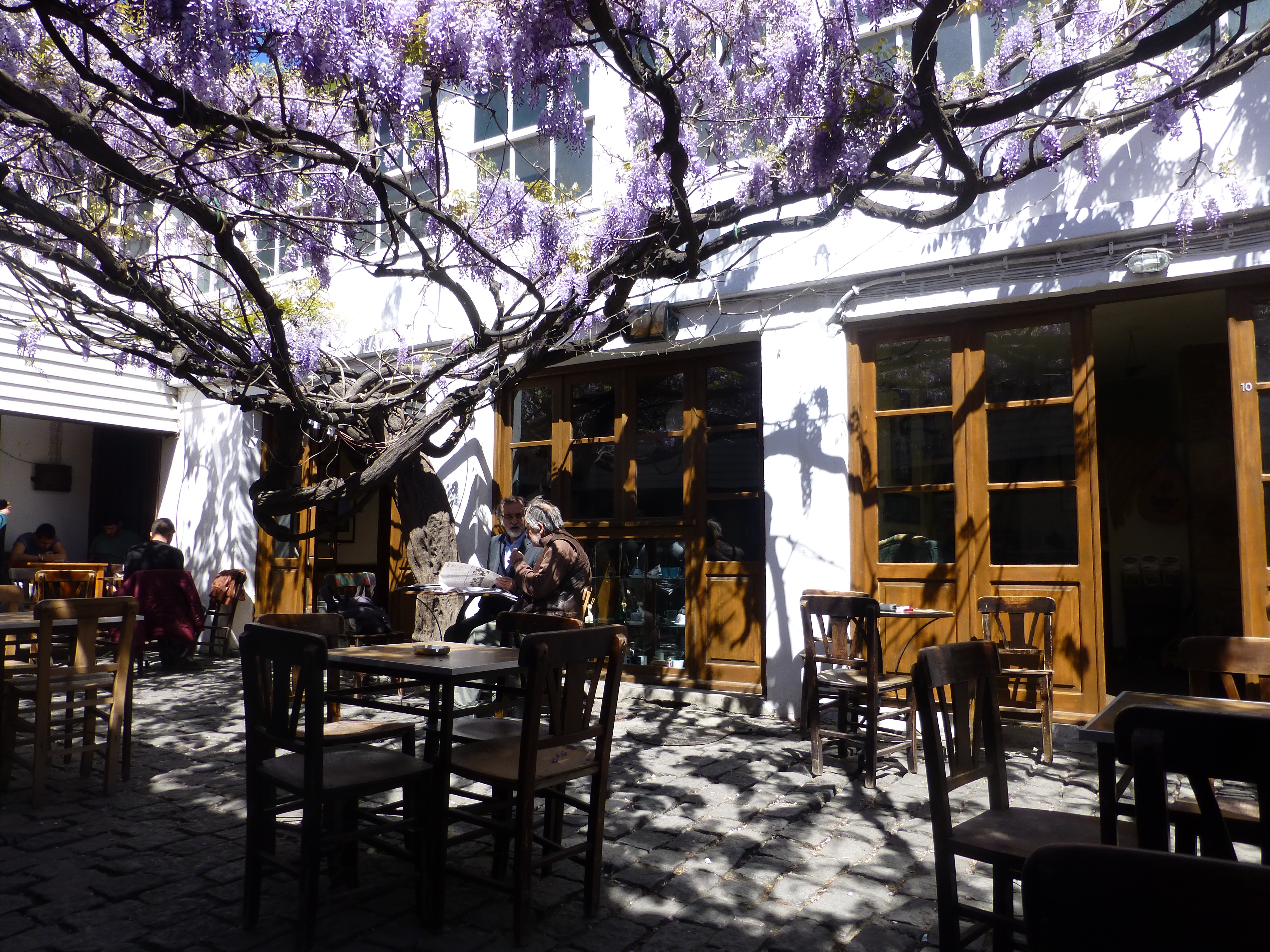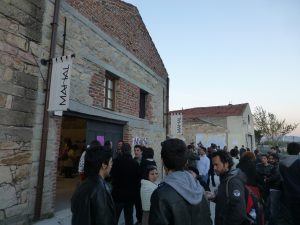“The land belongs to the people” announces the sign in big, black, capital letters. The land in question is the dilapidated ruin of a cognac distillery, drab green and covered with graffiti. The sign was not put up by squatters, radicals, or guerilla advertisers. It instead bears the logo of the Çanakkale municipality, approved after an arduous right-to-the-city campaign to take community control of urban decisionmaking.

Turkey may be perceived, both by outside observers and by Turks, to be an authoritarian democracy fueled by a construction boom. This is not entirely unfair, but this particular city of 116,000 on the Dardanelles between Istanbul and the Aegean Sea is either the exception that proves the rule or a new way forward, as its citizens struggle and more often than not succeed to keep their city unique.
Çanakkale’s history befits a port sitting between the Aegean and the Marmara seas. Known as Kale-i Sultaniye in Ottoman times, the city bloomed around a fort reinforced after Greek independence in 1832. By the time World War I began in 1914, Muslims made up only about 64% of the city’s 22,252 people. The rest were Greek Orthodox (20%), Armenian (6%), or Jewish (10%) and it is this mix that gave Çanakkale its distinctive identity even today, when the non-Muslim war dead who died defending the Ottoman Empire on the nearby battlefields of Gallipoli far outnumber the non-Muslim Turks living in the city.
In “The Cities We Lost,” Iason Athanasiadis puts this lapsed cosmopolitanism in the sad context of a 20th century full of violence. “In all the countries that once boasted ports bustling with multicultural communities,” Athanasiadis writes, “narratives of religious and nationalist chauvinism were manipulated to create a front against a ’common enemy’.” He adds that pogroms “may have yielded temporary relief through the redistribution of their capital and assets, but it hardly resulted in lasting economic and social wellbeing.”
The human remainders of cosmopolitan Çanakkale are difficult to find, subsumed as they have been into nationalist narratives and rarely-recorded memories of grandparents. Anathasiadis emphasises the importance of the city itself; its buildings, streets, and archives, in linking 21st-century concrete-bound boulevards to their deep cobblestone roots. Although they have never met, he has a formidable Çanakkale ally in Veysel Tolun.

“I want to see life in the streets and in the museums.”
“Archaeology is the study of how people lived. Tourism just focuses on what is nice to look at.” Tolun shrugs, smiling at his professor’s desk laid siege to by books and articles. Tolun is an archaeologist at Çanakkale 18 March University, which was built in 1992 to fuel the region’s tourism-specific growth. He fell in love with the region’s ancient sites, classical cities that include Leander’s Abydos and Hector’s Troy, as a child in nearby Biga. He says that he enjoys working with archaeologists from all over the world, but finds the touristic focus on ruins at times problematic. “Archaeology museums are boring,” he says with a bemused smile. “I want to see life in the streets and in the museums.”
It was with this communitarian mission that Tolun helped found Çanakkale’s City Museum in 2006. The City Museum largely bypasses the ancient ruins and the infamous Great War battlefield focuses on the city itself. It houses exhibits on the town’s historic religious minorities, but also a large section on the town’s Roma population. “The Roma helped build the castle [the “Kale” that gives Çanakkale its name]. People are scared of them, but they predate the göçmen [immigrants] that made their life here.”

Tolun estimates that 85% of Çanakkale’s population is made up these ğoçmen, the Turkish word for refugees that is used to signify the new arrivals to Anatolia from the Balkans and Caucasus after the Turkish War of Independence. By calling attention to their foreignness to this land in the museum, he can construct visibility for the non-Muslim minorities that built Çanakkale, as well as allow for the historic brick and stone buildings they constructed to enter the city’s narrative.
Following the establishment of the Turkish Republic in 1923, spasms of nationalist violence rocked Marmara Turkey each decade until the country descended into multifactional violence in the 1960s after the Türkeş coup d’etat. While the anti-Greek pogroms of Istanbul in 1955 and the “Wealth Tax” expropriations of 1942 are perhaps better known for their effect on well-studied Istanbul, the Thrace Pogroms of 1934 were devastating to Çanakkale and its environs. A “resettlement” law intended to foster a national Turkish identity during economic crisis led to violent attacks on those seen by the disenfranchised to be not Turkish enough; the Jewish community was harassed, many of their buildings destroyed, and thousands of families fled to Istanbul or Izmir. The authorities in Ankara fired the mayor and the provincial governor for their inaction (which is more than can be said for, say, Kurdish Dersim), but the damage was done. Çanakkale, excised of large numbers of its Greeks, Armenians, and Jews as well as negligent of its Roma, tried to form a singular Turkish identity. Tolun’s beloved stone buildings stand up as monuments to this lie.

The city’s main shopping street, the çarşı, was historically Jewish even though only a lone Jewish baker and a somnolent synagogue remain. An Armenian church stands south of there, rehabilitated and used as a Sufi lodge by the University.
The waterfront is still dotted with Greek houses and schools, and even though the Greek Orthodox community makes the six-hour trip to Istanbul for most prayer, crushed dyed-red eggshells were visible on the ground at Easter, casualties of tsougrisma.
Tolun’s attachment to this history is more than purely professional. His grandfather’s pre-Republic, Greek-language, voting documents reside in the museum, describing the man as a muezzin by the name of Aiskalidis. Tolun’s aunt married a man named Halim Marakis, who lived in New York for 35 years before he came to Çanakkale, changed his name to Halim Ulutepe, and built a stately brick house near the Greek school. Veysel Tolun lived in this house for years until selling it to the Association of Turkish Engineers and Architects as a cultural property. As could be expected of a harbor community who live on soil rich enough to allow grapes to grow like weeds, the people of Çanakkale knew enough to distill the grapes into something to sell to sailors and soldiers and maybe have enough to tipple between bites of the region’s famous cheese. Çanakkale is a land of cognac, transliterated inelegantly — if in a heart-warmingly straightforward manner — as kanyak.

“I hate being the leader of something.”
The current cognac distillery was built in 1962 and looks like it, held together with sharp angles of modernist concrete. Built under the auspices of TEKEL, Turkey’s state alcohol monopoly, it was intended to formalize centuries of informal alcohol distillation. It worked in that it provided jobs and purchased tons of grapes from the countryside, it did not work in that people continued to make moonshine through the factory’s closing in 2007. The property, which faces the Dardanelles and catches sunsets glinting off of both the water and the dozens of memorials dotting the Gallipoli peninsula, was going to be converted into a mall until the purchasers chose a brownfield site nearby.

Tolun thought that the factory may join his old house as a cultural property and would be marked in the Visitor’s Guides that Tolun edited alongside the municipality. The city’s new demographics are changing and bring a new understanding of what Çanakkale is. “For 60 years this was a city for retired people and soldiers,” Veysel said, referring to the city’s pleasant waterfront and numerous military installations. “With the university here, we have the energy to make this city special.” Saving the cognac distillery was clearly one of the things requiring youthful energy. Fortunately for old men like Tolun, there are the younger folks like Timuçin Şahin, for whom the city stuck with an old factory it did not want meant one thing; “We have to use it.”
Şahin, 28, is the founder of Permakültür Canakkale, an environmental NGO that brings city-dwellers together with local farmers to create a Çanakkale-specific ecology. “I hate being the leader of something,” he laughs, but he has brought together about 1,500 members from throughout the region to pay attention to their olives and honey, and even to build a permaculture garden in town. Şahin says that his group consists mostly of parents concerned over the food their children are eating, although he counts one of the muhtars [a local politician, in the Turkish context] of the city as a member. Because of this — or because he is the sort of person who cannot go two sips of coffee without a passer-by coming to say hello — he was contacted by some of his friends to do something about the cognac factory.
At the end of September, a group of architects, planners, artists, and the like came together under the name “Fabrikale,” a portmanteau of “Fabrika” (the Turkish word for factory) and “Çanakkale.” For Şahin, it was important to be “as inclusive as possible, to make this a public initiative.” The goal was to make the public aware of their right to public space, but to do so in a non-political way. The best way to do this, they figured, was to hold a festival. And with the factory falling in on itself, they needed to find a new location. They needed warehouses for exhibition space, street life to bring people in, and outdoor space for concerts. The best place for them was south of the çarşı and east of the Armenian church, in the old Roma neighborhood.

Artists had been working with the Roma community for years in Çanakkale, so Fabrikale was able to work alongside the community in ways that a political organization fresh-faced and full of promises would not, according to Şahin. He also attributes the Roma’s receptiveness to Fabrikale to the latter’s willingness to allow Roma into the festival not as “ethnic” acts but as fellow artists. “The Roma wanted to be paid for the acts they provided,” Şahin reminisces. “It was only when they realized that none of us had any money to offer that they signed on anyways.”
For a weekend in March, the neighborhood was bustling with street dances, ceramic and textile workshops, and a clothing exchange presided over by Şahin in a newly-bartered faux-snakeskin vest. Near the festival and along the quay was MAHAL, a new artspace and community center housed in a renovated stone-and-timber warehouse donated by the Jewish Fortun family. Its director, Seyhan Boztepe, welcomed guests (including a nostalgic Veysel Tolun) to their “Revealing the City Through Memory” exhibit, touring through the city and labelled in Turkish, English, and Kurdish. A couple blocks north stood Yali Han, a 19th-century caravansaray that now hosts lectures on some nights and 20somethings smoking nargileh under starlight and wisteria most others.

“Çanakkale is something special.”
The “right to the city” is in many ways a right to tell the city’s story. The museum holds mementoes as disparate as the bicycle belonging to beloved merchant Yaşar Yohay and an exhibit on Ataturk and Reza Shah Pahlavi’s tour of the city. Fabrikale was a youth festival with breakdancers and DIY woodblock print scarves. In MAHAL, stories of lost fathers and mothers in the violence of the 1970s connected the impoverished of Çanakkale to their counterparts in Batman and Diyarbakir. Local politicians, businesspeople, and even the American Embassy in Istanbul’s Cultural Attache were around to have their ears pulled by any number of well-wishers and impolitic pleaders. It was hardly perfect; many of the politicians who were toasted that day were excoriated after the mine disaster in nearby Soma in the spring. But for at least a day, there was direct access to politicians and capital. People were milling around eating salted cucumbers, able to connect the city they wanted to the what they lived in and what used to be within that very city’s earshot.

Only a month after the event, Şahin is planning Fabrikale II over coffee. This time it will be in the public gardens by the waterfront. “Çanakkale is something special,” he offers as a reason for coming to the city from Ankara, and why he thinks others are coming to the city in droves. The smaller scale of the city allows for better organization and more public “public initiatives.” Şahin worries about political co-optation of the movement —the city’s mayor Ülgür Gökhan was happy to have his picture taken spraying graffiti on the distillery — but believes that change comes from working in concert with the municipality rather than against it. He does not shy away from comparisons with 2013’s Gezi Park protests and indeed states that “the [2013] protests gave us inspiration and courage,” but prefers Fabrikale’s logo-less and de-politicized platform to Gezi Park’s cacophony of organizations.
Şahin lays out two alternatives for the distillery once its crumbling walls are stabilized. It could be preserved as a UNESCO Industrial Heritage Site, the first in Turkey. It could also be a cultural center, providing more exhibition and activity space than can fit in the tiny City Museum downtown. Either way, the key for him and his group is to have the public engaged with what happens to the space they own, to prevent it from becoming another mall or wasted space. As it stands, the 21st-century city must grapple with what to ask of its 1960s structure built for a 1920s economy. It will take more than a festival to solve that struggle. Without a festival, however, Çanakkale may not even have known that the struggle existed.
All photographs courtesy of the author. For more photographs of old Çanakkale, please go to www.eskicanakkale.com.











3 comments